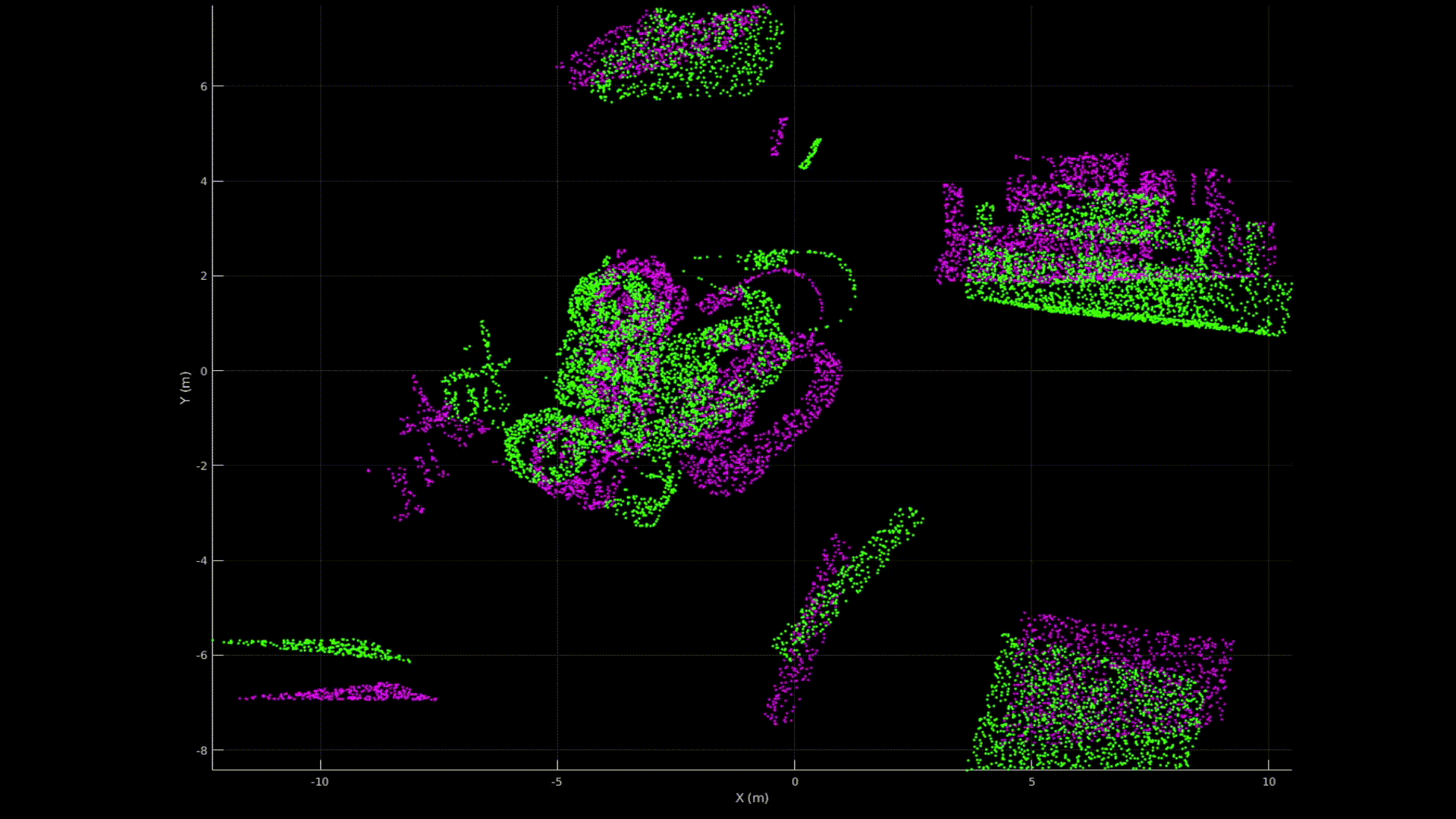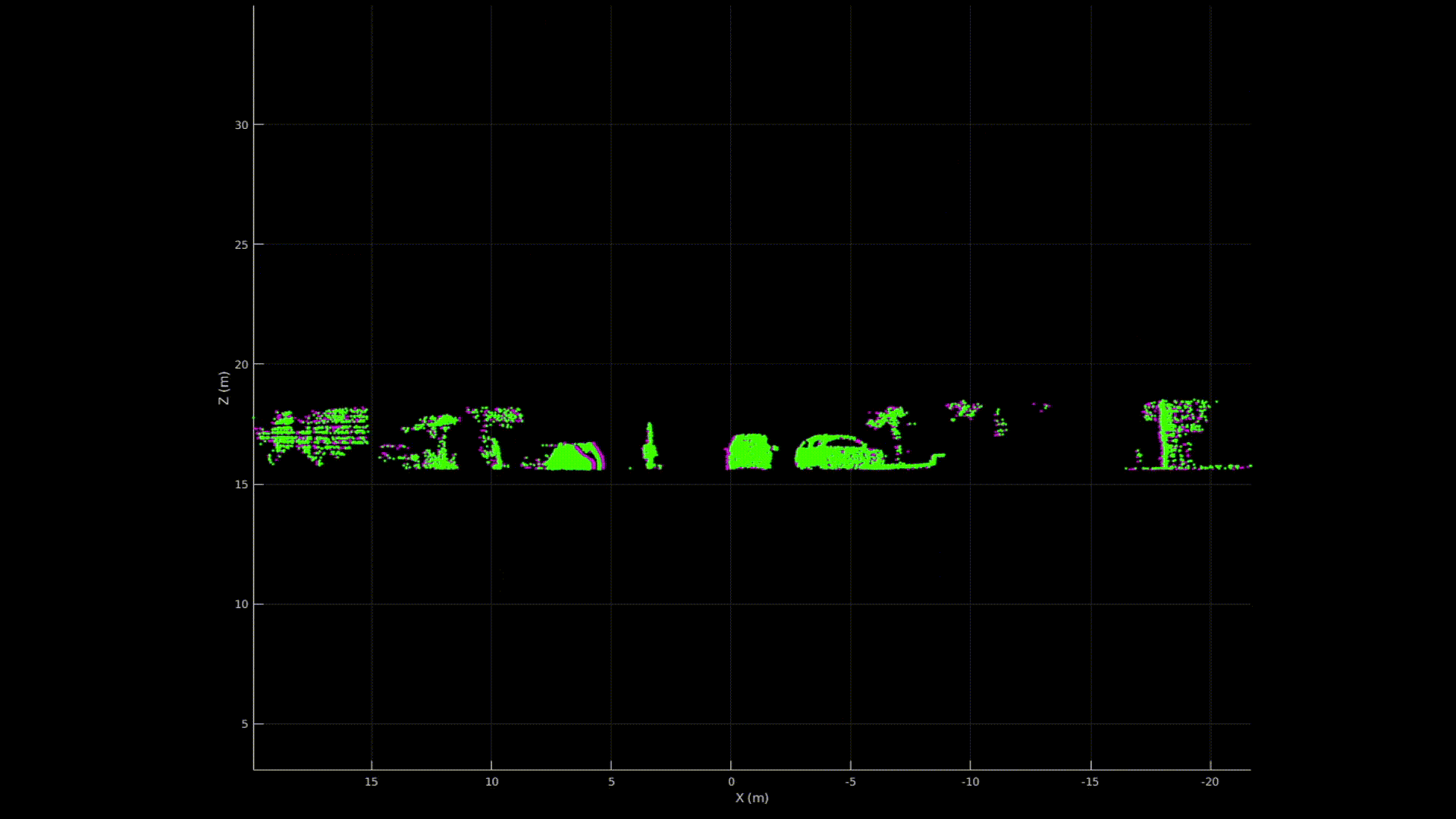This is the code for PointPWC-Net, a deep coarse-to-fine network designed for 3D scene flow estimation from 3D point clouds. Created by Wenxuan Wu, Fuxin Li from Oregon State University.
Update:
- Self-supervised loss is release in model.py(multiScaleChamferSmoothCurvature). You can train the self-supervised model by using train_self.py.
- Update PointConvFlow to compute the patch-to-patch cost volume.
- Update a updated model pretrain weight to obtain a better result(EPE3D: 0.0463 vs 0.0588) than the original paper.
If you find our work useful in your research, please consider citing:
@inproceedings{wu2020pointpwc,
title={PointPWC-Net: Cost Volume on Point Clouds for (Self-) Supervised Scene Flow Estimation},
author={Wu, Wenxuan and Wang, Zhi Yuan and Li, Zhuwen and Liu, Wei and Fuxin, Li},
booktitle={European Conference on Computer Vision},
pages={88--107},
year={2020},
organization={Springer}
}
@article{wu2019pointpwc,
title={PointPWC-Net: A Coarse-to-Fine Network for Supervised and Self-Supervised Scene Flow Estimation on 3D Point Clouds},
author={Wu, Wenxuan and Wang, Zhiyuan and Li, Zhuwen and Liu, Wei and Fuxin, Li},
journal={arXiv preprint arXiv:1911.12408},
year={2019}
}
Our model is trained and tested under:
- Python 3.6.9
- NVIDIA GPU + CUDA CuDNN
- PyTorch (torch == 1.5)
- scipy
- tqdm
- sklearn
- numba
- cffi
- pypng
- pptk
Compile the furthest point sampling, grouping and gathering operation for PyTorch. We use the operation from this repo.
cd pointnet2
python setup.py install
cd ../For fair comparison with previous methods, we adopt the preprocessing steps in HPLFlowNet. Please refer to repo. We also copy the preprocessing instructions here for your reference.
- FlyingThings3D:
Download and unzip the "Disparity", "Disparity Occlusions", "Disparity change", "Optical flow", "Flow Occlusions" for DispNet/FlowNet2.0 dataset subsets from the FlyingThings3D website (we used the paths from this file, now they added torrent downloads)
. They will be upzipped into the same directory,
RAW_DATA_PATH. Then run the following script for 3D reconstruction:
python3 data_preprocess/process_flyingthings3d_subset.py --raw_data_path RAW_DATA_PATH --save_path SAVE_PATH/FlyingThings3D_subset_processed_35m --only_save_near_pts- KITTI Scene Flow 2015
Download and unzip KITTI Scene Flow Evaluation 2015 to directory
RAW_DATA_PATH. Run the following script for 3D reconstruction:
python3 data_preprocess/process_kitti.py RAW_DATA_PATH SAVE_PATH/KITTI_processed_occ_finalHere are some demo results:
Set data_root in the configuration file to SAVE_PATH in the data preprocess section. Then run
python3 train.py config_train.yamlAfter training the model with a quater dataset, one can achieve a better results as the paper by finetuning the model with the full dataset using the following command. Before running the finetuning the model, one need to set the pretrain to the pretrained weights. An example path is shown in the config_train_finetune.yaml.
python3 train.py config_train_finetune.yamlOne can train the model using the similar commend as before for self-supervised model by replacing the train.py to train_self.py.
Set data_root in the configuration file to SAVE_PATH in the data preprocess section. Then run
python3 evaluate.py config_evaluate.yamlWe upload one pretrained model in pretrain_weights.
We thank repo and repo for subsampling, grouping and data preprocessing related functions.


